CarEdge saved me over 4,500 dollars on a brand new Honda Pilot. I can't say thank you enough.
Price intelligence
Find a wide range of vehicle listings with market insights on new and used listings near you.


Help us personalize your CarEdge experience — it only takes a second.
Your answers help us personalize your CarEdge journey — we’ll follow up with tips and next steps that match your buying timeline.
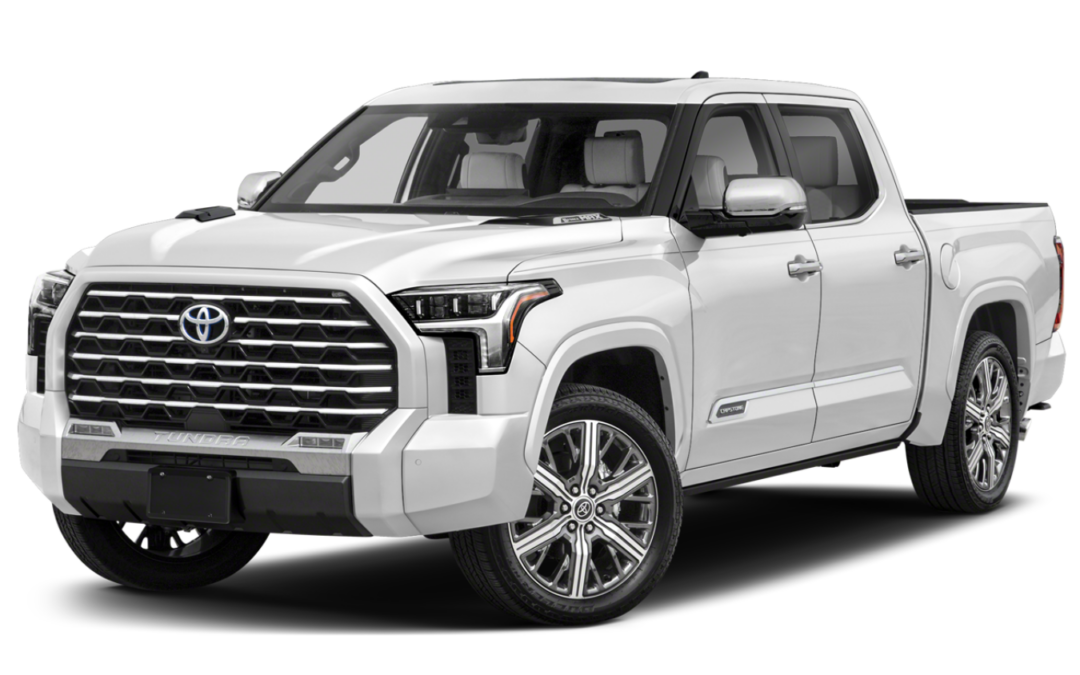
Toyota prices have risen 19% since 2018. Today, Toyota MSRPs are $6,124 higher on average. It’s true that Toyota prices haven’t climbed as drastically as other car brands (notably Jeep), but the price hikes still exceed historical norms for car price inflation. Overall, new car prices in America have risen 28% over the same period.
Could Toyota’s rising prices be to blame for the brand’s declining sales? Is the brand pricing for a market that’s simply too premium for Toyota’s reputation? Which Toyota prices have risen the most? We’ll answer these questions and more. Plus, we’ll take a closer look at Toyota’s best-selling models.
I think most automotive analysts would agree that Toyota Motor North America (TMNA) is doing just fine these days. Revenue and profits were both higher in 2023. But it’s not all good news, even as the brand has reached record market share.
Toyota’s US sales have been struggling to climb for most of the past five years. Yes, there was the pandemic and the ensuing parts shortage. Japanese automakers were hit particularly hard by the semiconductor chip shortage of 2021-early 2022. But even in 2023, the closest year we’ve had to a ‘normal’ year in a while, Toyota’s sales were essentially flat, and market share fell from 2022’s highs.
Toyota reported sales dropping from 2,128,263 in 2018 to 1,928,228 cars sold in 2023. For the first time in several years, Toyota’s market share in America fell in 2023.

Over the same period, Toyota’s average transaction price rose from $32,168 in 2018 to $38,298 in 2023, a price increase of 19 percent.
Toyota’s U.S. market share was steadily climbing as the brand conquered competitors like Chevrolet, Ford, and even Honda to an extent. That all ended in 2023, when Toyota’s market share took a slight dip. The leading theory for why this happened is that Hyundai and Kia’s rising popularity are a force to be reckoned with.

Could rising prices be to blame for stagnant sales, or is Toyota facing more competition from the likes of Kia and Hyundai? It’s likely a combination of these and other factors. Let’s take a look at Toyota’s average selling prices over time. We’ve also included the overall market trends for comparison’s sake.

Inflation is hitting everyone, including OEMs like Toyota. Clearly, Toyota has shielded their customers from the worst of car price inflation when compared to the industry average. Nevertheless, Toyota prices are climbing.
There’s another reality that has undoubtedly played into Toyota’s rising prices. As more buyers choose SUVs, crossovers, and even trucks (as is the trend these days), naturally, average transaction prices will rise. Larger vehicles almost always cost more than sedans.
Now, let’s look at how Toyota’s five best-selling models in America have fared when it comes to sales and price trends.
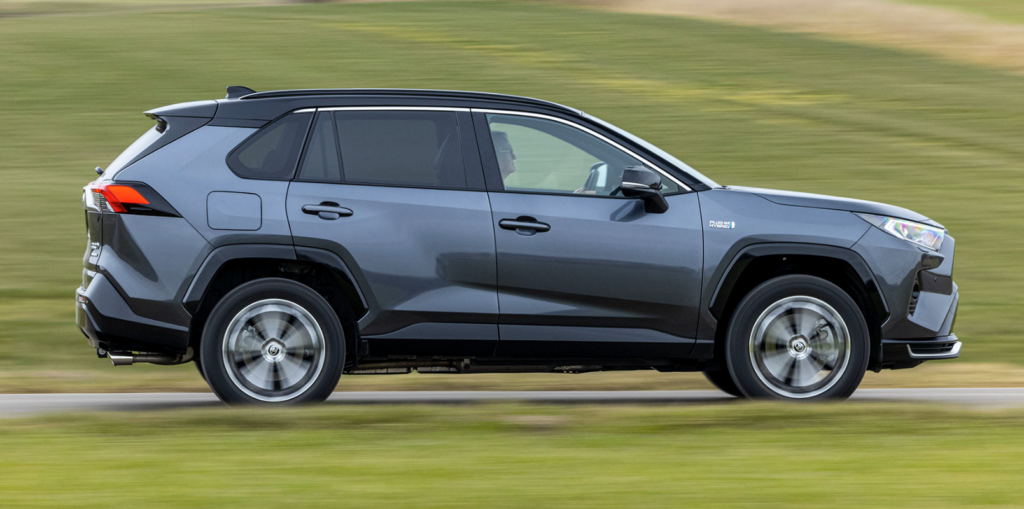
Last year, Toyota sold 434,943 RAV4’s in America. That’s up 8.8% from 2022. However, RAV4 prices have risen 11% in the past five years. Here’s a look at RAV4 price trends over the past five model years, with a breakdown showing the base model, mid-spec, and top-trim prices over time.

In 2024, CarEdge Data shows that the average transaction price for a new Toyota RAV4 is $37,053.
Browse Toyota RAV4 listings with the power of local market data.
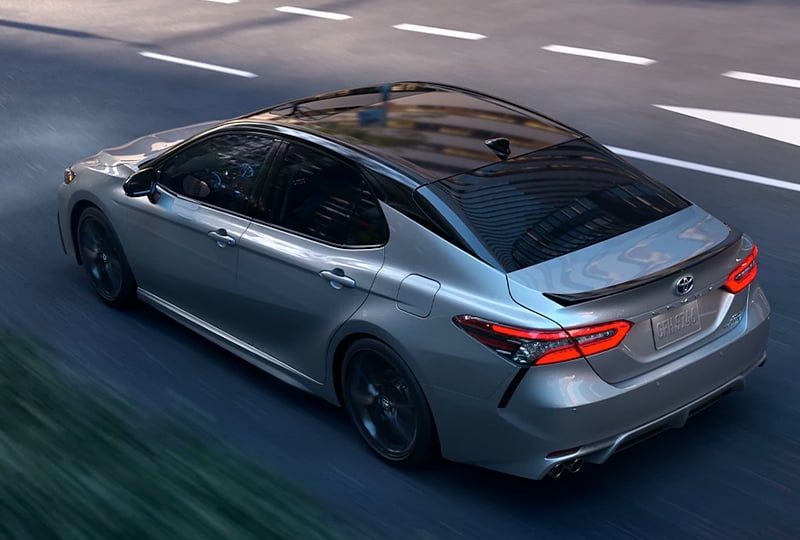
Last year, Toyota sold 290,649 Camry’s in America. That’s up 1.5% from 2022. However, Camry prices have risen 6% in just five years. Here’s a look at Camry price trends over the past five model years, with a breakdown showing the base model, mid-spec, and top-trim prices over time.

In 2024, CarEdge Data shows that the average transaction price for a new Toyota Camry is $32,256.
Browse Toyota Camry listings with the power of local market data.

Last year, Toyota sold 232,370 Corolla’s in America. US Corolla sales were up 4.5% year-over-year in 2023. However, Corolla prices have risen 12% in just five years. Here’s a look at Corolla price trends over the past five model years, with a breakdown showing the base model, mid-spec, and top-trim prices over time.

In 2024, CarEdge Data shows that the average transaction price for a new Toyota Corolla is $25,169.
Browse Toyota Corolla listings with the power of local market data.

Last year, Toyota sold 234,768 Tacoma’s in America. Tacoma sales were DOWN 1.1% year-over-year in 2023. However, rising prices could be to blame. Tacoma prices have risen 20.6% in five years. Here’s a look at Tacoma price trends over the past five model years, with a breakdown showing the base model, mid-spec, and top-trim prices over time.

In 2024, CarEdge Data shows that the average transaction price for a new Toyota Tacoma is $41,196.
Browse Toyota Tacoma listings with the power of local market data.

Last year, Toyota sold 125,185 Tundra’s in America. Tundra sales were up 20% year-over-year in 2023. Tundra prices have risen 26.3% in just five years, the biggest price increase of any Toyota model. Looking at sales stats, truck buyers don’t seem to mind. Here’s a look at Toyota Tundra price trends over the past five model years, with a breakdown showing the base model, mid-spec, and top-trim prices over time.

In 2024, CarEdge Data shows that the average transaction price for a new Toyota Tundra is $64,191.
Browse Toyota Tundra listings with the power of local market data.
Be sure to check back for the latest Toyota price data next month. In 2024, it’s a buyer’s market for the first time since the pandemic.
Who is CarEdge? Simply put, we’re a team of real people saving drivers serious money. How do we do it? We offer car buying help for every price point. From 100% free resources to an all-inclusive car buying concierge, and everything in between, CarEdge is taking the pain out of car buying.
How about some free car buying help…

Ready to outsmart the dealerships? Download your 100% free car buying cheat sheets today. From negotiating a deal to leasing a car the smart way, it’s all available for instant download. Get your cheat sheets today!
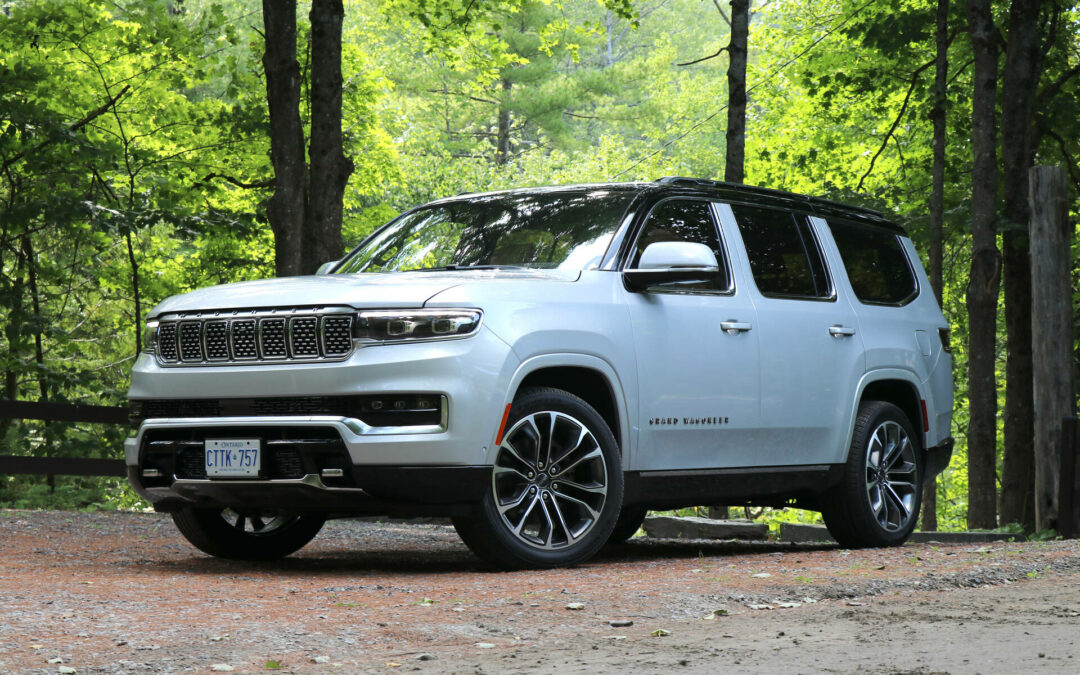
Jeep prices have risen 61% since 2018. Overall, new car prices in America climbed 28% over the same period. Could Jeep’s price inflation be to blame for the brand’s falling sales? Which Jeep prices have risen the most? Are all trim levels seeing equal price hikes? We’ll answer these questions and more. Plus, we’ll take a closer look at Jeep’s best-selling models. But first, let’s dive into Jeep’s overall sales and price trends in the U.S. market.
Is Jeep okay? The beloved brand has millions of diehard fans worldwide, but it seems that’s not enough to keep sales climbing. There’s no hiding the fact that Jeep is losing market share rather quickly. Looking at the numbers, Jeep’s parent company Stellantis reported sales dropping from 973,227 in 2018 to 642,924 cars sold in 2023. In the blink of an eye, Jeep sales fell 34%. For the first time in many years, Jeep’s market share in America has fallen below 5% of new car sales.

Over the same period, Jeep’s average transaction price rose from $33,954 in 2018 to $54,715 in 2023, a price increase of 61 percent.
Could worsening car price inflation be to blame for Jeep’s declining sales, or could it be concerns about reliability and high maintenance costs? It’s likely a combination of these and other factors. Let’s take a look at Jeep prices over time.

The launch of the Jeep Wagoneer and Grand Wagoneer was chief among the reasons for Jeep’s soaring prices. However, other factors were at play, too. In the next section, we’ll take a look at how much Jeep raised prices for their 5 best-selling models. We’ll even break it down by trim level.

Last year, Stellantis sold 244,594 Jeep Grand Cherokee’s in America. That’s up 10% from 2022. However, Grand Cherokee prices are rising. Here’s a look at Grand Cherokee price trends over the past five model years, with a breakdown showing the base model, mid-spec, and top-trim prices over time.

As Jeep continues to seek out buyers in the premium market, they continue to introduce more expensive top-line trims. Prices for a top-of-the-line Grand Cherokee is approaching, and in some cases exceeding, $80,000.
In 2024, CarEdge Data shows that the average transaction price for a new Jeep Grand Cherokee is $53,570.
Browse Jeep Grand Cherokee listings with the power of local market data.

The Jeep Wrangler has been on sale for nearly 40 years. In 2023, Jeep sold 156,581 Wranglers in America. Sales were down 14% from 2022. Here’s a look at Jeep Wrangler prices over time for three popular trim options.

The story is much the same for the Wrangler. While the Sport and Rubicon trim levels have slowly climbed higher, top trims have nearly doubled in price since 2020.
In 2024, CarEdge Data shows that the average transaction price for a new Jeep Wrangler is $59,457.
Browse Jeep Wrangler listings with the power of local market data.

Last year, Jeep Compass sales totaled 96,173, an increase of 12% year-over-year. Here are Jeep Compass price trends over the past five years, showing car price inflation as it happened.

In 2024, CarEdge Data shows that the average transaction price for a new Jeep Compass is $34,688.
Browse Jeep Compass listings with the power of local market data.
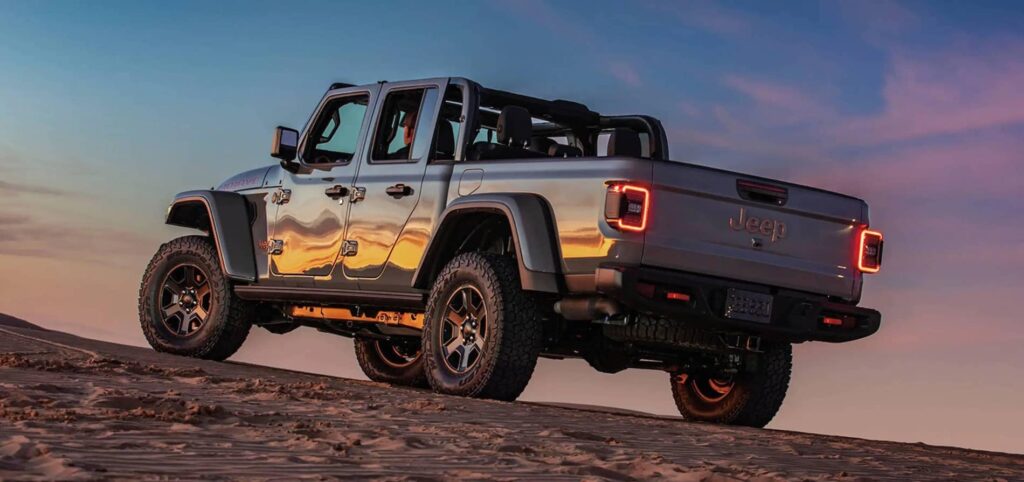
Gladiator sales fell sharply in 2023, down 29% from the year before. Could rising prices be to blame? It’s possible. Here’s a look at how rapidly Jeep Gladiator prices have climbed.

The Gladiator has seen significant price hikes every year since its release. The popular Rubicon has seen the steepest price increases.
Today in 2024, CarEdge Data shows that the average selling price of the new Jeep Gladiator is $52,401.
Browse Jeep Gladiator listings with the power of local market data.

After launching the Wagoneer for the 2022 model year, Jeep has had limited success selling the large SUV. The premium price tag sent Jeep’s average selling prices skyward, despite selling just 29,148 copies in 2023. The even larger and more luxurious Grand Wagoneer sold 10,618 units last year.
Being that this is a new model, we don’t have an extensive price history just yet. We can see that since 2022’s launch, Jeep has already raised the base price of the Wagoneer from $60,995 in 2022 to $64,945 for 2024.
Who is CarEdge? Simply put, we’re a team of real people saving drivers serious money. How do we do it? We offer car buying help for every price point. From 100% free resources to an all-inclusive car buying concierge, and everything in between, CarEdge is taking the pain out of car buying.
How about some free car buying help…

Ready to outsmart the dealerships? Download your 100% free car buying cheat sheets today. From negotiating a deal to leasing a car the smart way, it’s all available for instant download. Get your cheat sheets today!
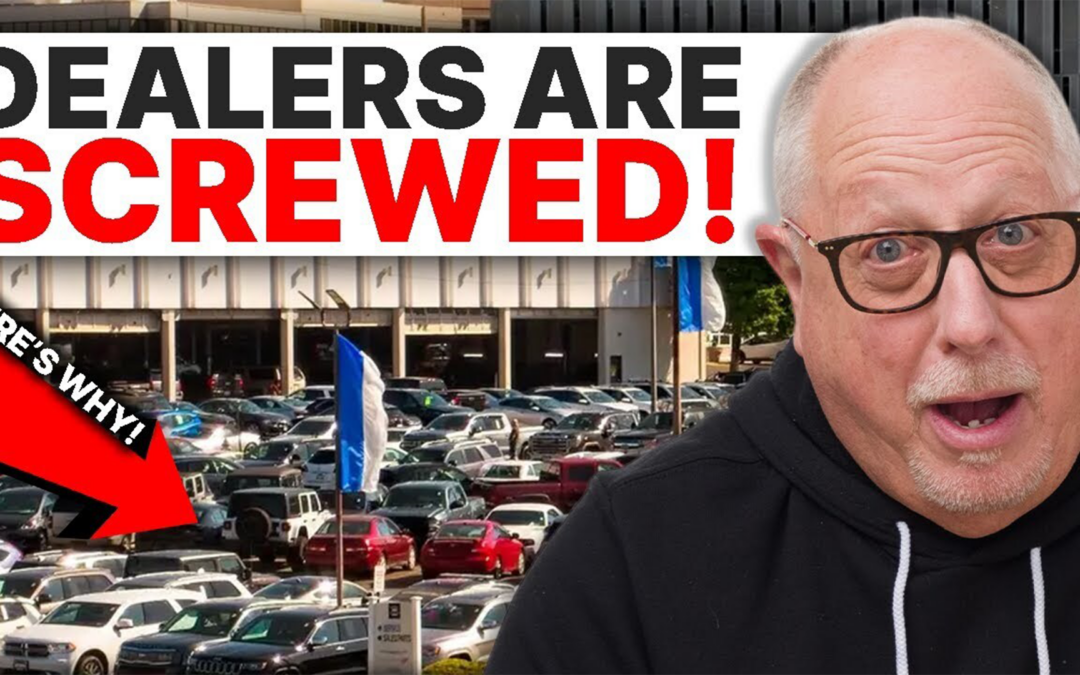
In February, smart car buyers can negotiate thousands of dollars off of brand-new 2024 models, but only if you know where to look. Several cars, trucks, and SUVs simply aren’t selling like OEMs and dealers expected. Normally, there’s between 45 and 65 days of supply for new cars. This means that if there were no new shipments, it would take that many days to sell the existing inventory and current selling rates. Right now, multiple models are above and beyond 100 days of supply, and in some cases, well north of 200 days of supply.
Calling this an oversupply would be an understatement. This surplus has turned the tables for potential buyers, who now find themselves in a unique position to leverage this abundance for potentially better deals. Utilizing the latest insights from CarEdge Data, we’ve pinpointed which 2024 cars and trucks are currently the most negotiable.
👉 Tired of negotiating? We’ll buy your car for you! Learn more about buying with CarEdge.

Current Market Supply: 213 days
Total For Sale: 16,377
Today’s Best Offer: 1.9% APR for 72 months
What’s new for 2024?
For 2024, Ford has refreshed the exterior with updated headlights and a redesigned grille. A 2.7-liter turbocharged V-6 engine now sits as the standard powertrain, offering a fresh dynamic under the hood. Additionally, the previous Platinum Plus variant has been replaced by a newly introduced Limited trim, marking a significant update in the model’s lineup.
See Ford F-150 listings with local market data.

Current Market Supply: 119 days
Total For Sale: 16,344
Today’s Best Offer: 4.9% APR for 60 months
What’s new for 2024?
The 2024 Explorer largely mirrors the 2023 model. Minor updates include newly integrated air vents and rearranged components to accommodate a bigger infotainment screen and a new smartphone shelf.
See Ford Explorer listings with local market data.

Current Market Supply: 215 days
Total For Sale: 34,291
Today’s Best Offer: Lease for $490/month for 39 months with $4,444 due
What’s new for 2024?
Other than some new aluminum wheel options for the Limited trim, the Grand Cherokee is unchanged for the 2024 model year.
See Jeep Grand Cherokee listings with local market data.

Current Market Supply: 250 days
Total For Sale: 20,303
Today’s Best Offer: $399/month (buy OR lease)
What’s new for 2024?
In 2024, the Jeep Compass sees minimal changes, with the addition of new appearance and equipment packages slated for later in 2024. An updated front grille insert and fresh 19-inch wheel designs will be introduced soon. Additionally, the Trailhawk variant will be equipped with a new set of all-terrain tires.
See Jeep Compass listings with local market data.

Current Market Supply: 162 days
Total For Sale: 25,117
Today’s Best Offer: 0.9% APR for 36 months (+ deals for longer term loans)
What’s new for 2024?
The 2024 lineup introduces the Carbon Turbo trim, featuring Zircon Sand paint, black wheels, and Terracotta leather seats, and is powered exclusively by a 250-hp 2.5-liter turbocharged engine. The Select trim is now called the Select Sport, which boasts upgraded 18-inch black metallic wheels, black mirrors, and black synthetic leather. Additionally, a larger 10.3-inch infotainment screen is now offered in the higher-end Turbo models.
See Mazda CX-30 listings with local market data.

Current Market Supply: 225 days
Total For Sale: 45,901
Today’s Best Offer: $479/month (Night Edition – buy OR lease)
What’s new for 2024?
For 2024, the Ram remains largely unchanged, possibly in anticipation of the substantial updates planned for the 2025 model. Notably, Ram discontinued the diesel engine option for the 1500 model last year.
See Ram 1500 listings with local market data.
With more than twice the normal inventory levels in some cases, it’s clear that several 2024 models are highly negotiable, despite being fresh out of the factory. Before you visit dealership lots, remember this: dealers are stubbornly reluctant to lower sticker prices, but they’re more open to negotiating with educated buyers than at any time in the past few years. With negotiation know-how, you can save thousands.
Free Car Buying Help Is Here! Download your FREE, no-strings-attached car buying cheat sheets here.
Tired of haggling and negotiating? Let us buy your next car for you! Learn more about buying with CarEdge.


Despite achieving a record-breaking sales year in 2023, with over 11 million vehicles sold worldwide, Toyota is currently navigating through a turbulent period marked by a series of scandals and controversies across its 17 companies. The Japanese automotive giant, renowned for its quality and safety, has been hit by governance issues and testing irregularities that threaten to tarnish its global reputation. Should you be concerned about Toyota reliability? Here’s what you need to know.

Toyota’s chairman, Akio Toyoda, has publicly apologized for the scandals plaguing its subsidiaries, including small-car maker Daihatsu, truck manufacturer Hino Motors, and Toyota Industries, which is responsible for producing engines. The issues primarily revolve around certification test procedures for cars and engines, casting a shadow over Toyota’s commitment to quality and integrity. In a bold move, Toyoda addressed the media and stakeholders, expressing deep regret for the inconvenience and concern caused by these irregularities.
“I would like to express my deepest apologies to our customers and stakeholders for the inconvenience and concern caused by the successive irregularities at Hino Motors, Daihatsu and Toyota Industries,” Toyota Chairman Akio Toyoda told reporters

The repercussions of these scandals are already being felt among affected brands. Daihatsu suspended shipments of all its cars following a safety scandal investigation that revealed issues with 64 models, some of which are sold under the Toyota brand.
This has led to a significant drop in Daihatsu’s global production and sales. The Daihatsu scandal led the company to halt production. Toyota itself has halted shipments of certain models, including the Hilux truck and Land Cruiser 300 SUV, after an independent panel discovered wrongdoing in tests for diesel engines produced by Toyota Industries.
The situation worsened when Japanese transport officials raided a Toyota-affiliated plant after the company admitted to cheating on engine testing. This admission adds another layer to the company’s current woes. This scandal is particularly damaging as it involves some of Toyota’s most popular international models, including the Land Cruiser and Hilux SUVs, affecting markets in Japan, Europe, the Middle East, Africa, and Asia.
Takata’s massive airbag recalls have been ongoing for over a decade. Since 2013, over 40 million cars and trucks have been recalled due to dangerous hazards from the airbags.
In 2024, Toyota is expanding the Takata airbag recall even further. The company has issued a warning to owners of about 50,000 vehicles in the United States. The new Toyota recall includes certain model years of the Corolla and RAV4. Toyota advises drivers to take their vehicles in for service immediately.

These are the models and years affected by the most recent Toyota recall:
See if your VIN is included in ANY Toyota recall here.
As Toyota grapples with these multiple fronts of controversy, leadership is under pressure to steer the company out of scandal and restore its image. However, with no concrete plan of action, Toyota drivers are wondering what’s next.
Should you be concerned about Toyota’s reliability? In the United States, no major issues have arisen aside from the decade-long Takata airbag recalls. Regardless, we highly recommend checking if your VIN is subject to ANY recalls, regardless of make or model. Use the U.S. NHTSA’s free recall checker here.
No matter how you look at it, Toyota’s resilience is under pressure. Drivers and competitors alike are watching closely to see how the automaker known for reliability will respond to these challenges.

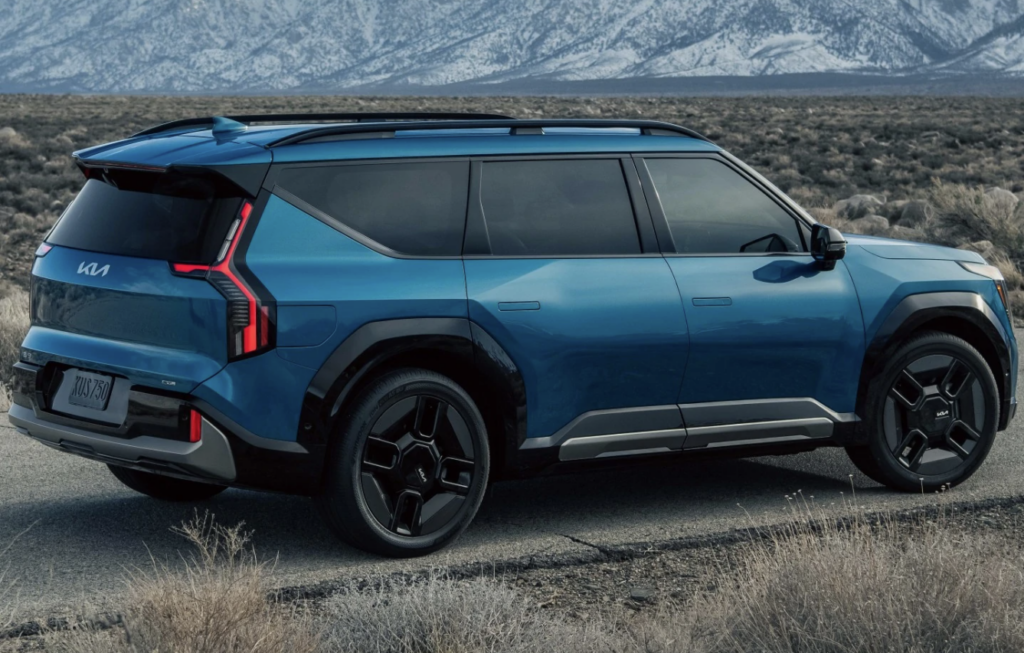
For the first time in over two decades, Super Bowl 58 will come and go without advertisements from America’s largest automakers. Ford, General Motors, and Stellantis, the parent company of Chrysler, are all sitting out the 2024 Super Bowl ad frenzy. Traditionally, the Detroit Three dominated Super Bowl car commercials. Not anymore. But which automakers ARE advertising in the 2024 Super Bowl? We’ve got the complete list below.
By the way, if you’re wondering how much Super Bowl commercials cost this year, the latest word on the street is somewhere north of $7 million per 30-second spot.
Toyota is all-in on the Super Bowl this year with a series of ads starring former NFL quarterback Eli Manning, YouTuber Pushing Pistons, and other big names. These ads will showcase various Toyota models, including the Supra and the all-new Land Cruiser SUV. From the teasers we have, it’s interesting to see Toyota advertising niche models rather than going for mass appeal.
Here’s another Toyota Super Bowl commercial:
Should you worry about the recent Toyota scandal? Here’s what we think.
Volkswagen is returning to Super Bowl advertising for the first time since 2014, with a focus on its electric vehicle lineup. The ad for the all-new ID Buzz all-electric van aims to highlight Volkswagen’s evolution from its iconic Beetle to today’s electric offerings. Volkswagen’s EVs have been no exception to the current ‘EV winter’, as the ongoing sales slump has been called.
See VW listings with local market data.
BMW’s advertisement highlight its new hybrid and electric models, and features actor Christopher Walken.
See this month’s best BMW deals.
Kia, on the other hand, is set to advertise its all-electric EV9 SUV. In January, the EV9 outsold the EV6 just one month after hitting the market. Finally, a somewhat affordable 3-row EV is here.
Are Kia’s New Cars and SUVs Reliable?
Could 2024 be the last time we see a meaningful number of automotive Super Bowl ads? With the price tag for a half-minute spot climbing ever higher, it’s no surprise that OEMs are turning down the opportunity in times of strong headwinds. With struggling transitions to EVs everywhere you look, automakers are likely to have plenty of reasons to spend less in the years ahead.
What we could see next year is newcomers to Super Bowl commercials. It wouldn’t surprise us if the likes of Rivian, Lucid, and even Tesla fork over $10 million for a 30-second spot in 2025. Is it a wise use of millions of dollars? That’s up for you to decide.
What do you think? Let us know in the comments below.

Ready to outsmart the dealerships? Download your 100% free car buying cheat sheets today. From negotiating a deal to leasing a car the smart way, it’s all available for instant download. Get your cheat sheets today!